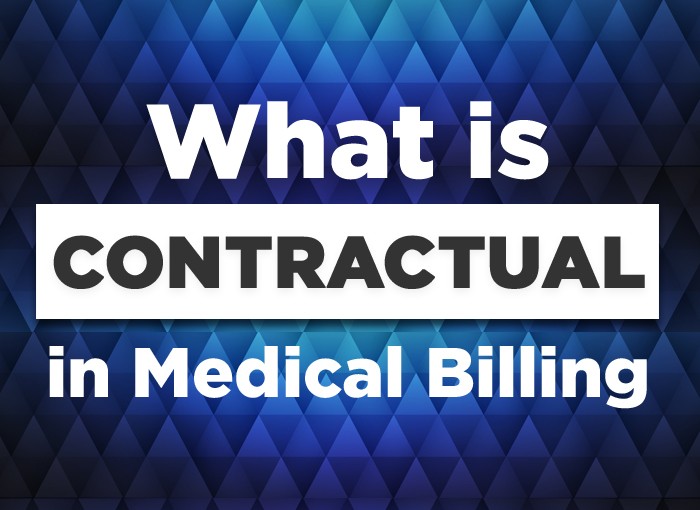What is Contractual in Medical Billing
Based on the general understanding, a contractual adjustment may be defined in the following manner:
- “A binding agreement between a provider, patient, and insurance company wherein the provider agrees to charges that it will write off on behalf of the patient. Contractual adjustments may occur when there is a discrepancy between what a provider charges for health care services and what an insurance company has decided to pay for that service.”
(Source: https://www.medicalbillingandcodingonline.com/medical-billing-terminology/) - As per the Michigan Department of Community Health (MDCH), the term contractual adjustment is “the difference between the provider’s charges less any third party obligations (payment plus co-pays, deductible, and co-insurance).”
(Source: http://www.medicarepaymentandreimbursement.com/2010/04/what-is-write-off.html) - “The difference between billings at established charges and amounts received or due from third-party payers under contract agreements – similar to a trade discount.” (Source: doh.wa.gov)
So, a contractual adjustment may be defined as a portion of a patient’s bill that the provider is required to write-off (not charge for) due to the billing agreements with an insurance company. The word ‘adjustment‘ indicates additional payment, denied payment, partial payment, penalty payment, reduced payment, supplemental payment, and zero payment.
Understanding Contractual Adjustment
In order to comprehend the term contractual adjustment, it is important to understand the terms billing amount and maximum allowable charge.
Billing amount refers to the total amount billed/charged by the health care provider to compensate for the medical services received by the patient. The billing amount is always higher than the maximum allowable charge—a fixed amount paid or reimbursed by the insurance company compensating the medical services received by the insured patient. Insurance companies have a set amount for reimbursement that is often lower than the billing amount. The difference between the billing amount and the maximum allowable charge is referred to as a contractual adjustment. The provider cannot charge the patient for the remaining amount given the patient has an agreement with the insurance company. The EOB helps in giving a glimpse of the maximum allowable charge for each medical service listed in the insurance plan thus making contractual adjustment an obligation and preventing any fraud due to unethical billing.
For example, if a provider’s billing amount is $80 and the maximum allowable charge of an insurance company is $65. Then the provider is obligated to receive the $65 and write-off the $15 from the patient’s account.
Role of Contractual Adjustment in Medical Billing
Having a good understanding of contractual adjustment may help a medical billing office to avoid legal issues that may appear in the future due to non-compliance. The provider must not charge the insured patient for the remaining fee provided the patient has an agreement with the insurance carrier. However, sometimes providers tend to charge the patient for the remaining amount due to the lack of understanding of the term contractual adjustment. Therefore, it is advisable to outsource medical billing services from a good medical company to get professional assistance. The company provides assistance from trained medical billers and coders who have a deeper understanding of medical terminology and compliance. This helps in reducing the risk of unfavorable events due to contractual adjustments that may affect your revenue cycle by resulting in an investigation due to illegal/unethical billing practices.




